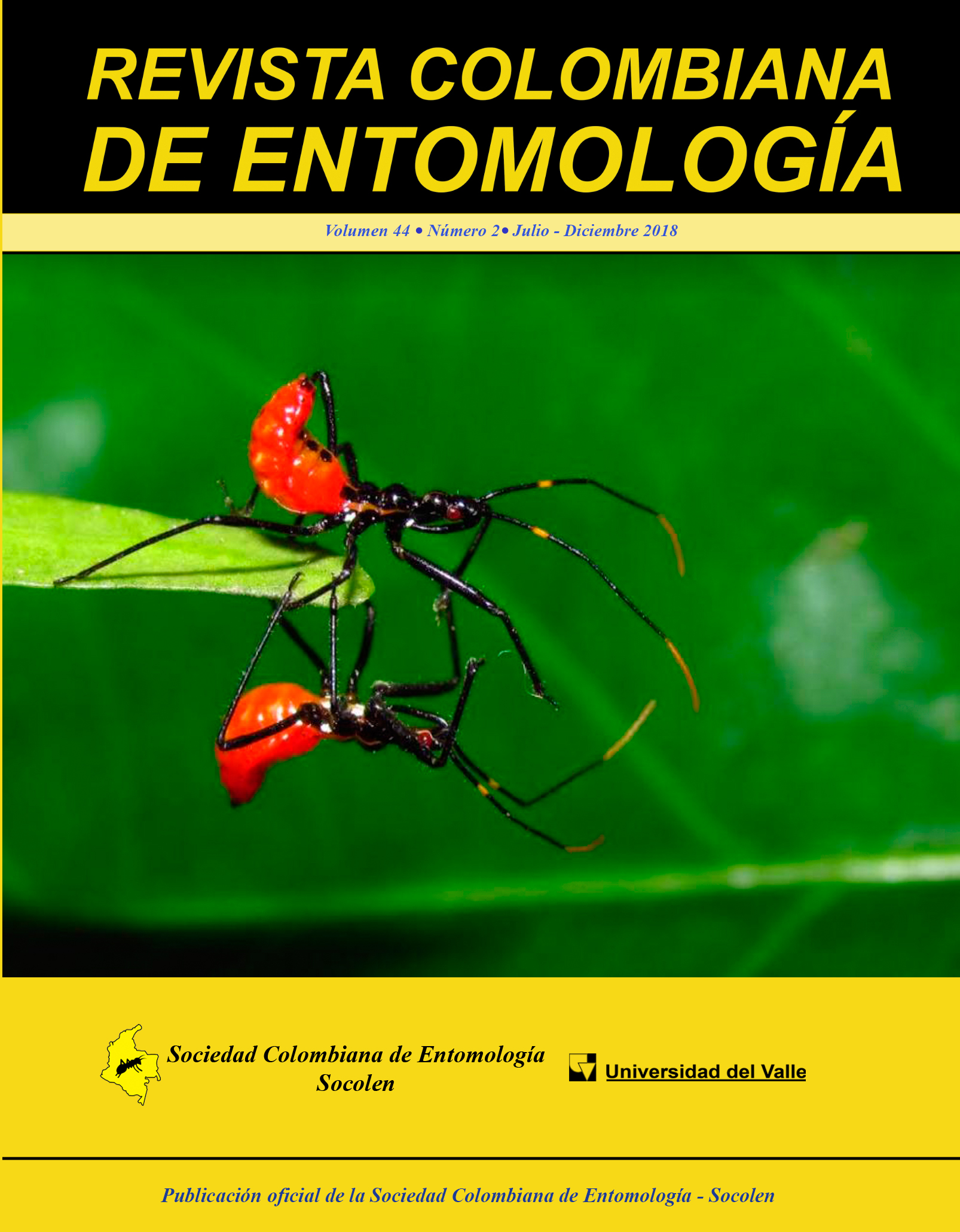Spatial and temporal distribution of Diatraea spp. (Lepidoptera: Crambidae) in the Cauca River Valley, Colombia
Main Article Content
Sugarcane stem borer (Diatraea spp) damage has increased in the Cauca River Valley (CRV) due to two new species, D. tabernella and D. busckella, which joined the two already known species, D. saccharalis and D. indigenella. A study of the bioecology of these pests and their natural enemies is presented in order to increase the effectiveness of pest management, which consists primarily of biological control. An assessment of the extent of pest damage was completed during a crop cycle in nine fields distributed along the CRV. Sampling was done in a 30x30 meter grid and 50 points were geo-referenced in each field. A registry was made of the number of damaged stalks and the number of bored internodes per stalk. Outside the grid, eggs and larvae of the pests were collected by means of a one man-hour sampling effort. The northern CRV showed the greatest levels of pest injury and a predominance of D. tabernella and D. busckella. Egg parasitism by Trichogramma exiguum reached levels of 98 %, whereas Cotesia flavipes was the most abundant larval parasitoid. There were positive correlations between the percent of damaged stalks (%TD) and crop age, and between the number of larvae and parasitized larvae. A spatial analysis of %TD showed an aggregated distribution concentrated toward the edge of the grid. Pest management protocols should be differentiated by region within the CRV in order to prioritize areas of greatest infestation.
Similar Articles
- Zaida Xiomara Sarmiento-Naizaque, Carlos E. Sarmiento, Nancy Barreto-Triana, Parasitoids, Braconidae (Hymenoptera) and Tachinidae (Diptera) of borers, Crambidae and Coleophoridae (Lepidoptera) of sugarcane for the production of panela in Colombia , Revista Colombiana de Entomología: Vol. 47 No. 2 (2021): Servicios Ecosistémicos
- Claudia Echeverri-Rubiano, Héctor Alberto Chica-Ramírez, Germán Andrés Vargas-Orozco, Host plant resistance to Diatraea spp. attack (Lepidoptera: Crambidae) in sugarcane , Revista Colombiana de Entomología: Vol. 43 No. 2 (2017)
You may also start an advanced similarity search for this article.
Accepted 2021-10-03
Published 2018-12-31

This work is licensed under a Creative Commons Attribution-NonCommercial-ShareAlike 4.0 International License.
Authors retain the copyright on their work and are responsible for the ideas expressed in them. Once a manuscript is approved for publication, authors are asked for a publication license for the term of legal protection, for all territories that allows the use, dissemination and disclosure of the same.





